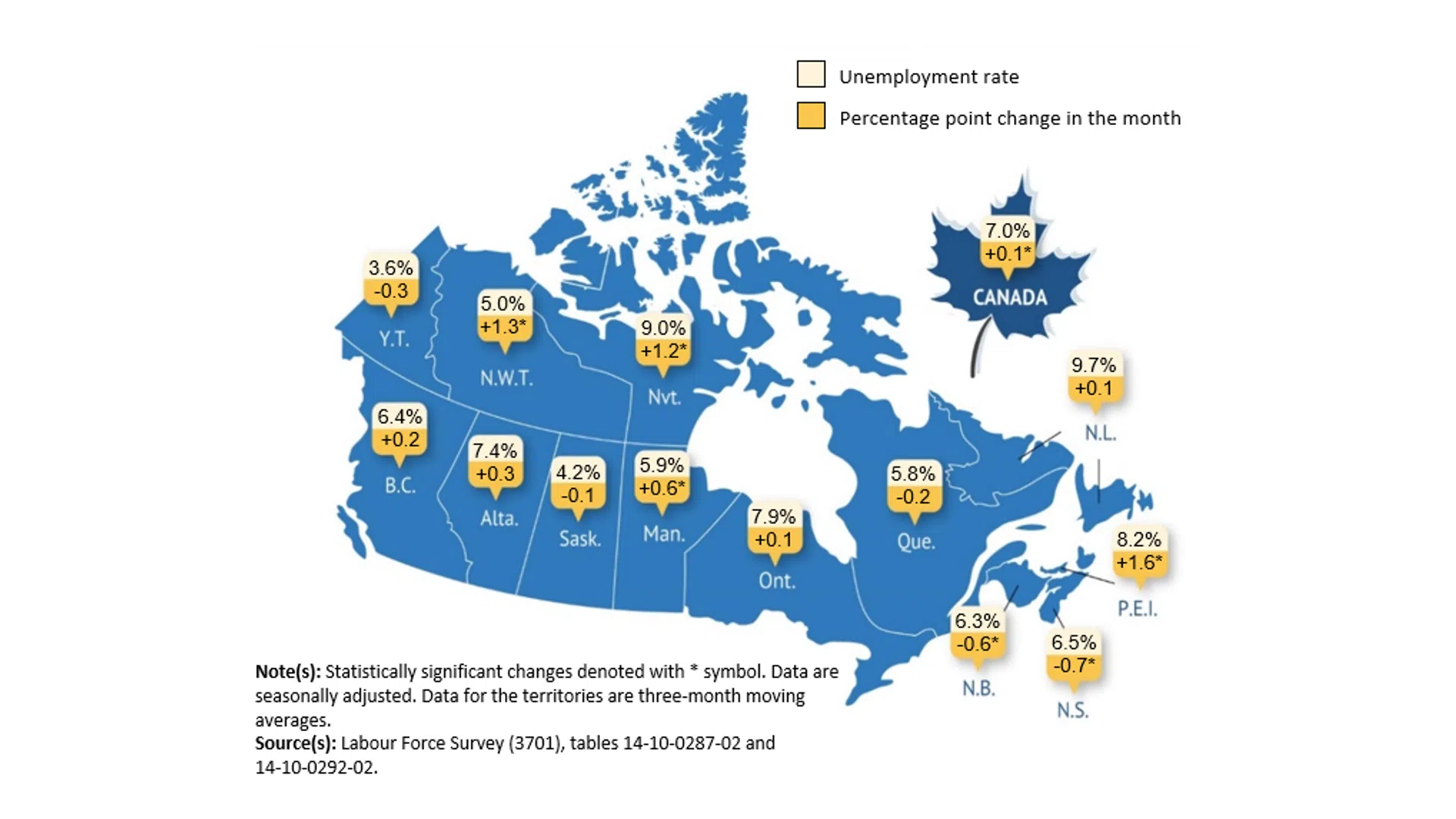Canada’s unemployment rate has climbed to its highest level in several years.
Statistics Canada said the unemployment rate reached seven per cent in May.
That is the highest level since September of 2016, not including during the pandemic.
Employment was little changed last month, with just 8,800 new jobs being added. Growth in full-time employment was offset by a decline in part-time work, said the report.
“Overall, there has been virtually no employment growth since January, following strong gains from October 2024 to January 2025,” it said.
The employment rate — the proportion of people aged 15 and older who are employed — was unchanged at 60.8 per cent, matching a recent low in October 2024.
The number of private sector employees rose by 61,000 in May, the first increase since January, while public sector employment fell by 21,000. Self-employment also fell by 30,000, which StatCan said was the first significant drop in two years.
Employment rose for core-aged women 25 to 54 years old, while employment among core-aged men fell to its lowest rate since August 2018. Employment was little changed among youth and people aged 55 and older.
Average hourly wages among employees increased 3.4 per cent, or $1.20, to $36.14, which was the same growth rate as in May.
A look at some of the provincial numbers
New Brunswick gained 3,700 full-time positions and 3,900 part-time jobs for an overall employment increase of 7,600.
That pushed the unemployment rate down by 0.6 percentage points to 6.3 per cent, according to the report.
Nova Scotia added 6,400 full-time jobs and 4,100 part-time positions for an overall increase of 10,600.
As a result, the province’s unemployment rate dropped 0.7 percentage points to 6.5 per cent.
Prince Edward Island lost 2,700 jobs as the unemployment rate in that province jumped to 8.2 per cent from 6.6 per cent.
In Ontario, the province gained 24,600 full-time positions but lost 21,100 part-time jobs for a net increase of 3,400.
But with more people in the labour force, the unemployment rate ticked up to 7.9 per cent from 7.8 per cent.
Statistics Canada defines the labour force as everyone aged 15 or older who has a job or is actively looking for one.
The full report can be found on Statistics Canada’s website.










